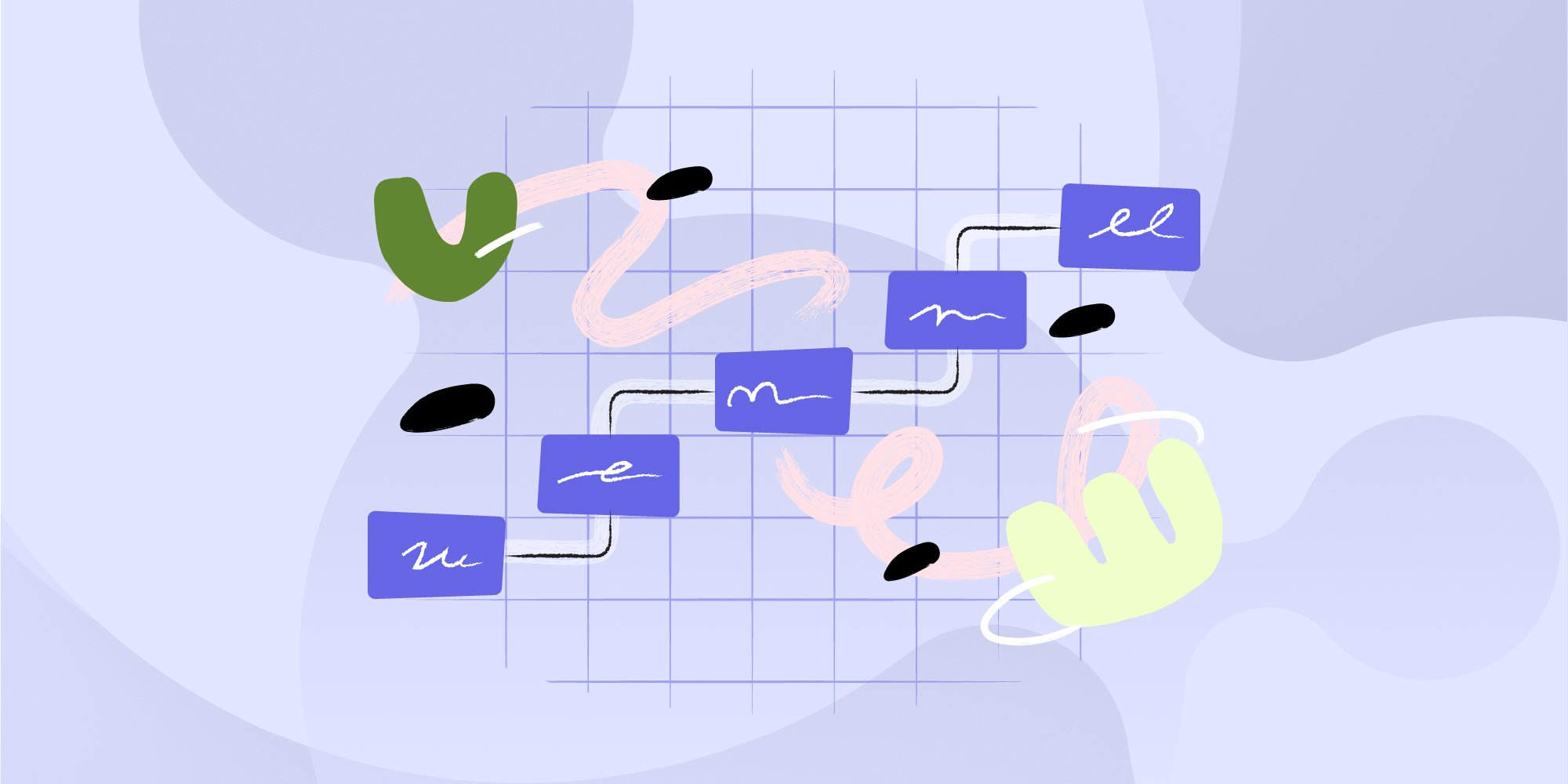A robust and reliable network is undoubtedly the core of successful business operations. Network support, an often overlooked yet crucial aspect of IT infrastructure, is vital in maintaining this digital nervous system.
This article explores the multifaceted world of network support, exploring its significance, components, and impact on businesses of all sizes.
¿What is network support?
Network support refers to the services dedicated to maintaining and enhancing the functionality of computer networks. This area of support is critical for businesses of all sizes that rely on robust network systems for daily operations, communication, and data management.
The primary focus of network support is to ensure that enterprise networks operate smoothly and efficiently. This includes monitoring network performance to detect potential issues early, troubleshooting problems when they arise, and assisting users facing connectivity challenges. We'll break down these activities in more detail in the following sections.
In addition to those technical tasks, network support plays a vital role in safeguarding the network against security threats. Network managers must implement strategies to protect against unauthorized access and cyberattacks.
In a few words, effective network support contributes to the reliability and stability of network systems, which is essential for maintaining business productivity and minimizing downtime.

The scope of network support
Now that we’ve defined network support let’s take a closer look at its scope. These are the core activities of network support:
1. Proactive monitoring and maintenance
Proactive network support involves continuous monitoring of network performance and health. This includes:
- Network performance metrics: Tracking key indicators such as bandwidth usage, latency, and packet loss.
- Automated alerts: Setting up systems to notify IT staff of potential issues before they escalate.
- Predictive maintenance: Using data analytics to predict and prevent potential network failures.
2. Infrastructure management
This involves overseeing the physical and virtual components of your network. It includes:
- Router and switch configuration and maintenance
- Server management and optimization
- Cabling system organization and upkeep
- Implementation and management of wireless access points
3. Security management
With the increasing frequency and sophistication of cyber threats, network security is paramount. Network support teams are responsible for the following:
- Multilayered security: Implementing firewalls, intrusion detection systems, and antivirus software.
- Regular security audits: Conducting thorough assessments to identify vulnerabilities.
- Patch Management: Ensuring all systems are up-to-date with the latest security patches.
- User authentication and access control: Implementing strong password policies and multi-factor authentication.

4. Software and firmware updates
Keeping all network components up-to-date is crucial for security and performance. This involves:
- Operating system patches and updates
- Firmware upgrades for network devices
- Application updates and version control
6. Disaster recovery and business continuity
Preparing for the unexpected is vital. Network support teams develop and maintain:
- Backup and recovery systems
- Redundancy and failover solutions
- Disaster recovery plans and procedures

5. User support and training
End-user support is a key component of network support, including:
- Helpdesk services for network-related issues
- User training on network policies and best practices
- Access management and authentication support
- Developing self-service resources and a knowledge base
7. Capacity planning and scalability
Last but not least, effective network support includes planning for future growth. This involves:
- Traffic analysis: Understanding current network usage patterns and projecting future needs.
- Hardware lifecycle management: Planning for equipment upgrades and replacements.
- Scalable architecture design: Implementing network designs that can easily accommodate growth.

The importance of network support
The importance of effective network support cannot be overstated. Here's why it's indispensable for businesses:
1. Ensuring operational continuity
Maintaining network uptime is crucial in an era when downtime can cost thousands of dollars per minute. Network support teams work tirelessly to prevent outages and quickly resolve issues when they occur.
For example, a manufacturing company relies on its network to coordinate production, manage inventory, and communicate with suppliers. A network outage could halt production, leading to missed deadlines and financial losses.
2. Safeguarding sensitive information
Data breaches can devastate a company's reputation and cost a lot of money.
The healthcare industry is a good example here. These organizations must ensure that patient data is protected in compliance with regulations like HIPAA. Network support teams implement encryption, access controls, and monitoring systems to safeguard this sensitive information.
3. Scalability and growth
As businesses grow, their network needs evolve. Effective network support allows for seamless scaling of IT infrastructure. A startup that begins with a handful of employees might grow to hundreds within a few years. Network support ensures that the IT infrastructure can grow alongside the company, adding new users, locations, and technologies without disrupting operations.
4. Innovation and competitive advantage
A robust, well-supported network allows businesses to adopt new technologies and innovate. For example, a retail company looking to implement an omnichannel strategy needs a reliable network to integrate its online and offline operations seamlessly. Network support makes this possible by ensuring the infrastructure can handle new applications and data flows.

Network support teams: Structure and roles
Effective network support is vital for maintaining an organization's operational efficiency and security. As businesses grow and technology evolves, the complexity of network environments increases, necessitating a well-defined structure within network support teams.
Let's explore how network security teams are organized and the various roles that contribute to effective network support.
Key roles within these teams include:
- Network Security Manager: At the helm of the security strategy, the network security manager coordinates efforts across various departments, aligning cybersecurity initiatives with overall business objectives. This role is essential for ensuring that the organization's security posture remains strong.
- Security Analysts: These team members are responsible for monitoring network traffic and identifying suspicious activities. By analyzing potential security incidents, they play a crucial role in maintaining the integrity of the network and responding to threats in real-time.
- Network Engineers: Network engineers design and implement secure network architectures, focusing on configuring firewalls, VPNs, and other critical security measures. Their expertise ensures that the infrastructure is resilient against attacks.
- Incident Response Team: This specialized group springs into action during security breaches. Their responsibilities include quickly assessing the situation, containing threats, and developing strategies to prevent future incidents, thereby minimizing potential damage to the organization.
- Compliance Officer: The compliance officer collaborates closely with IT and legal teams to ensure adherence to legal and regulatory standards. This role is crucial for safeguarding sensitive data and maintaining the organization’s reputation.
- Helpdesk Technician: This person acts as the first line of support for users, addressing network connectivity issues and managing account access.
- Data Analyst: Analyzes network performance metrics to identify trends, enabling informed decisions for improvements.
Of course, the division of responsibilities within network support teams will differ significantly based on the size and complexity of the organization. Larger companies often require a more specialized approach. For instance, they typically have:
Specialized roles: With intricate network designs, larger organizations benefit from professionals focusing on specific areas such as cloud security, endpoint protection, and threat intelligence.
Dedicated Incident Management teams: In bigger firms, incident response is usually handled by dedicated teams trained to address security breaches, whereas smaller companies may rely on existing staff to manage multiple responsibilities during an incident.
The future of network support: emerging trends
As technology advances, network support continues to evolve. Here are some trends shaping the future of network support:
1. Artificial Intelligence and Machine Learning in Network Management
AI and ML are revolutionizing network support by:
- Predictive analytics: Using historical data to predict network issues before they occur.
- Automated troubleshooting: Implementing AI-driven systems that can diagnose and even resolve some network issues without human intervention.
- Intelligent resource allocation: Dynamically adjusting network resources based on real-time demands.
For example, a large data center might use AI algorithms to optimize cooling systems based on server load and environmental conditions, improving energy efficiency and reducing downtime risks.
2. Software-Defined Networking (SDN)
Software-defined networking (SDN) is an approach that simplifies network management by separating the control plane (which determines how data flows through the network) from the data plane (which physically forwards data).
Traditionally, these two functions were integrated into the hardware, but SDN centralizes the control in a software-based controller, allowing administrators to manage the entire network through a single interface.
This shift brings several key advantages:
- Centralizing network control: Allowing for easier management of complex networks.
- Increasing flexibility: Enabling rapid network reconfiguration to meet changing needs.
- Improving security: Providing more granular control over network traffic and access.
3. Cloud-Based Network Management
Cloud technologies are impacting network support through:
- Remote management: Allowing IT teams to monitor and manage networks from anywhere.
- Scalable resources: Providing the ability to quickly scale network resources up or down as needed.
- Automated updates: Streamlining the process of keeping network management tools up-to-date.
4. Internet of Things (IoT) integration
The proliferation of IoT devices presents new challenges and opportunities for network support:
- Device management: Developing systems to manage and secure many connected devices.
- Data processing: Implementing edge computing solutions to handle the vast amounts of data IoT devices generate.
- Network segmentation: Creating separate network segments for IoT devices to enhance security.
Best practices for effective network support
To maximize the benefits of network support, organizations should consider the following best practices:
1. Develop a network support strategy
- Assess current needs: Conduct a thorough evaluation of your organization's network requirements.
- Plan for the future: Consider future growth and technological advancements in your strategy.
- Align with business goals: Ensure your network support strategy supports overall business objectives.
2. Invest in the right tools and technologies
- Choose appropriate monitoring tools: Select tools that provide comprehensive visibility into your network.
- Implement automation: Use automation tools to handle routine tasks and improve efficiency.
- Implement a ticketing system: Use a structured system to track and manage support requests.
- Stay current: Regularly update and upgrade your network support tools and technologies.
3. Focus on Proactive Management
- Implement Predictive Maintenance: Use data analytics to anticipate and prevent network issues.
- Conduct regular performance reviews: Analyze network performance data to identify areas for improvement.
- Stay informed about emerging threats: The attack surface is constantly growing. Keep abreast of the latest security threats and mitigation strategies.

4. Invest in training and development
- Provide ongoing training for IT staff: Ensure your team stays up-to-date with the latest network technologies and best practices.
- Educate end users: Offer regular training sessions on network usage and security for all employees.
- Foster a culture of continuous learning: Encourage IT staff to pursue relevant certifications and attend industry conferences.

Final words
As we've explored throughout this article, network support is a critical factor in business success.
To wrap up, let's focus on actionable steps that organizations can take to enhance their network support:
- Conduct a thorough assessment of your current network infrastructure and support processes.
- Develop a long-term strategy that aligns network support with your business goals.
- Invest in training for your IT team to keep them updated on the latest technologies and best practices.
- Implement robust security measures, including regular audits and employee education programs.
In conclusion, remember that effective network support is not a one-time effort but an ongoing process, one that requires continuous attention, investment, and adaptation.
For business leaders, the message is clear: network support deserves a place at the strategy table. It's a key factor in operational efficiency, security, and innovation.















